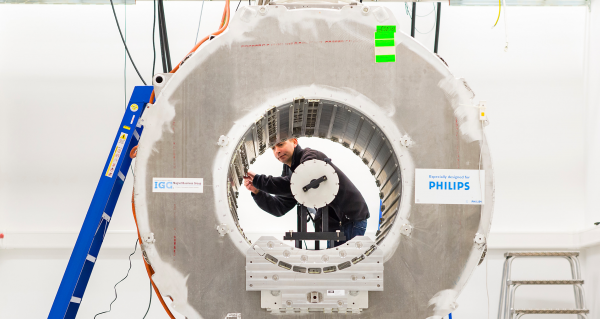Matt Moran, the managing director of Philips Australia New Zealand, says the healthcare industry is reworking and recalibrating how it operates to ensure a more sustainable future.
Known historically for its high level of waste, the Australian healthcare industry is currently responsible for seven per cent of Australia’s carbon emissions. From single-use items to its dependency on fossil fuels, the sector faces a significant battle to become more sustainable.
As healthcare providers rapidly adopt new ways of working to address major industry challenges, there are rising concerns about the waste produced when products reach the end of their lifespan.
To address these concerns, important stakeholders like Philips are leading the way in reimagining how medical devices and products can be reclaimed, reconditioned and redeployed once they reach their usage quota.
The unsustainable healthcare industry
The healthcare industry is in a unique position – both contributing to the causes of climate change whilst being on the front line of its impact.
With increasing climate volatility commonplace, an increasing rate of Australians are finding their health impacted every year for weather-related ailments including respiratory issues from increased air pollution, through to more significant trauma care as a result of natural disasters like the 2020 bushfires and 2021 floods.
This, combined with the existing challenges of an ageing population and rising incidence of chronic disease generally add to the capacity pressure faced by the healthcare industry.
The challenge for healthcare providers is to treat and care for patients and simultaneously implement sustainable, clinical workflows leading to sustainable solutions.
Additionally, these new models of care need to be introduced without interrupting existing day-to-day operations which are increasingly at capacity.
Rethinking traditional healthcare models
A rapid increase in healthcare investment has been the catalyst for a dramatic overhaul of existing systems and new solutions in the past 12 months.
COVID-19 and the subsequent government response across healthcare investment has been significant, with an emerging opportunity to build not only more robust systems of care with increased capacity, but sustainable use models encouraging a more efficient allocation of resources and a limiting of carbon-heavy traditional practices.
We are finding that traditional healthcare processes are no longer viable for the delivery of modern care, due to resourcing limitations, time restraints and increased pressure on legacy systems causing significant disruption to workflows.
Moving on from a volume-based to a value-based approach to care is critical to shifting healthcare outcomes closer to the 'quadruple aim' of better outcomes, lower costs and improved experiences for both patients and practitioners.
This model applies to the adoption of more sustainable healthcare practices.
To ensure that new solutions are answering the industry’s functional and sustainable requirements, hospitals and healthcare providers need to develop long-term, collaborative relationships with health system providers and care delivery partners. If done well, this can support the development of full ecosystems that can grow, adapt and respond to meet changing requirements and demands as they emerge.
The circular economy
Beyond deploying new, more sustainable health technology solutions, a step towards more sustainable practices requires a transition from the existing linear operational model of ‘take, make, dispose’ to adopting the circular model of ‘build, re-use, return.’
In a circular economy, products, parts and materials within a device are able to be used and reused independently, keeping them at their highest utility capability at all times.
When a system approaches obsolescence, components and parts from within a device often remain effective tools for healthcare delivery, and the process to ensure the full lifespan of components is leveraged is a must-have for healthcare providers both to increase healthcare capacity and to reduce cost.
Again, a broader adoption of digital-first processes will make this easier, enhancing our industry’s ability to manage scarce resources, both human and material, more efficiently.
It also supports new ways of providing and delivering care, through emerging platforms like telehealth which remove physical location barriers of medical interactions, providing better resource management of staff capacity.
Finally, digital and technology-first solutions also play a role in cultivating a new healthcare ethos built on revised pricing models like value-based care, meaning more flexible and adaptable solution portfolios can be delivered to healthcare providers.
For the healthcare industry to reduce its carbon emissions, changes need to be made that place importance not only on the delivery of services but sustainability and the longevity of solutions used to deliver those services to patients.
By being accountable, staying educated and adapting to new ways of thinking, we’re able to continue growing the impact and improving the outcomes of treatment, without hindering the environment around us.
